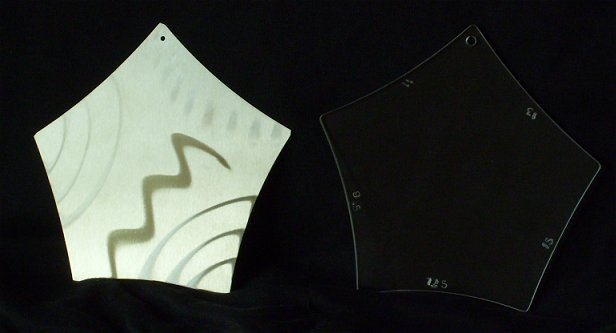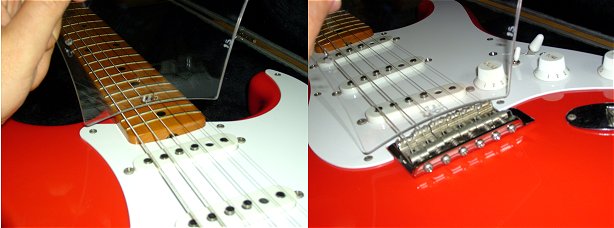|
Ever wonder why a guitar that was set up by an experienced luthier plays much better than ever before ? Well, one of the important things a luthier does is paying attention of your fretboards radius ! So what is fretboard radius and how does it influence the playability of a guitar ? Fretboard radius is simply the curve of the fretboard from side to side. This curve is to make the fretboard more comfortable for the fretting hand. The radius is described as a measurement such as 7.25", 9.5", 12" or 16". These measurements tell you that the fretboard is a segment of a circle or cylinder, which has a radius, or size of 7.25", 9.5", 12" or 16". The larger the radius, the larger the circle, and the flatter the fretboard will be. Quite simply, the smaller radius (which is more curved) is more comfortable for playing (particularly barre) chords, while a larger, flatter radius is better for low action, single-note playing and bending. The other important characteristic of radius is that the flatter the radius, the lower the action can be. This is because when you bend a string on a lower part of the fretboard such as your first or second string, you are bending it towards the middle of the fretboard, which is higher than the edges, so the notes will tend to "fret out" - buzz against the higher parts of the fret, killing sustain.
Another important thing to note is that staggered polepiece pickups (like vintage style single-coils) were originally designed for vintage Fender guitars, which had a small 7.25" radius. These sometimes don't work well with flatter radii, making the middle strings jump out much louder, particularly the G string (which was also designed for wound strings). There is a workaround for this problem, which is to keep the pickups set lower (further away from the strings), where the string-to-string balance will even out. The downside to this workaround, is that you lose volume with the pickups set lower. While at first thought it might seem as though the curve of the strings should match that of the fretboard, this is not necessarily so. A flatter radius is usually possible, as bending the middle strings usually pulls the strings to the lower sides of the fretboard, where there is less chance of them fretting out. Try setting your nut radius to match your fretboard and your bridge radius to be slightly flatter - effectively giving your strings a compound radius. You will find this gives a much easier feel and a lower action.
To measure radius it is necessary to have a simple but specialised tool: a radius gauge ! With our radius gauge you can measure both, the fretboard and the string radius. Our radius gauge is perfectly laser cut and not machined by CNC because of narrower tolerances. You will have the most common radii in only one tool: 7.25" / 9.5" / 11" / 13" / 15" We offer two different versions, the "luthiers choice" radius gauge is out of "see through" lucite and very durable. The radii markings are branded, so itīs impossible to wipe them away. On top there is a hole to hang it on a nail or something similar. The "premium" radius gauge is out of SS304 stainless steel and beautifully grinded, a real eyecatcher for your working space.
"Luthiers Choice" radius gauge (lucite) $ 28.50 / 25.00 €uros (SKU: radiusstd)
Prices incl. VAT - packing, delivery and PayPal charges will be added additionally
|

